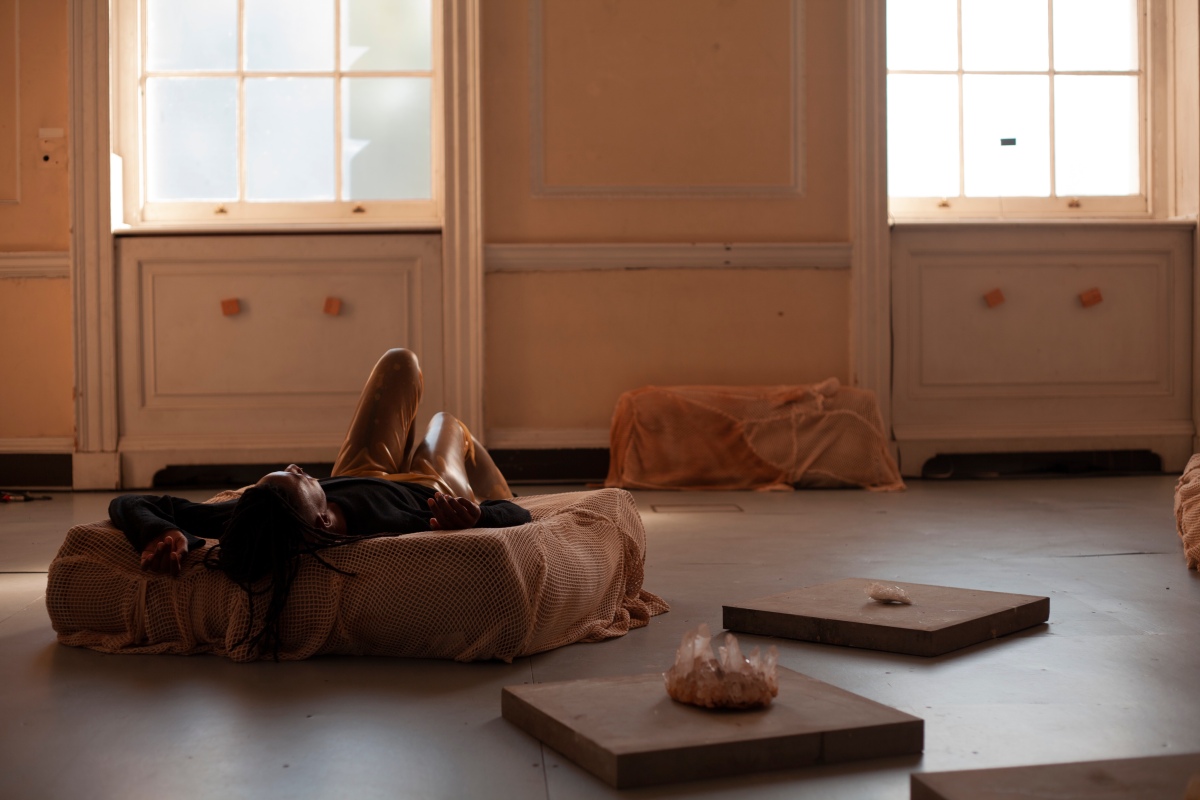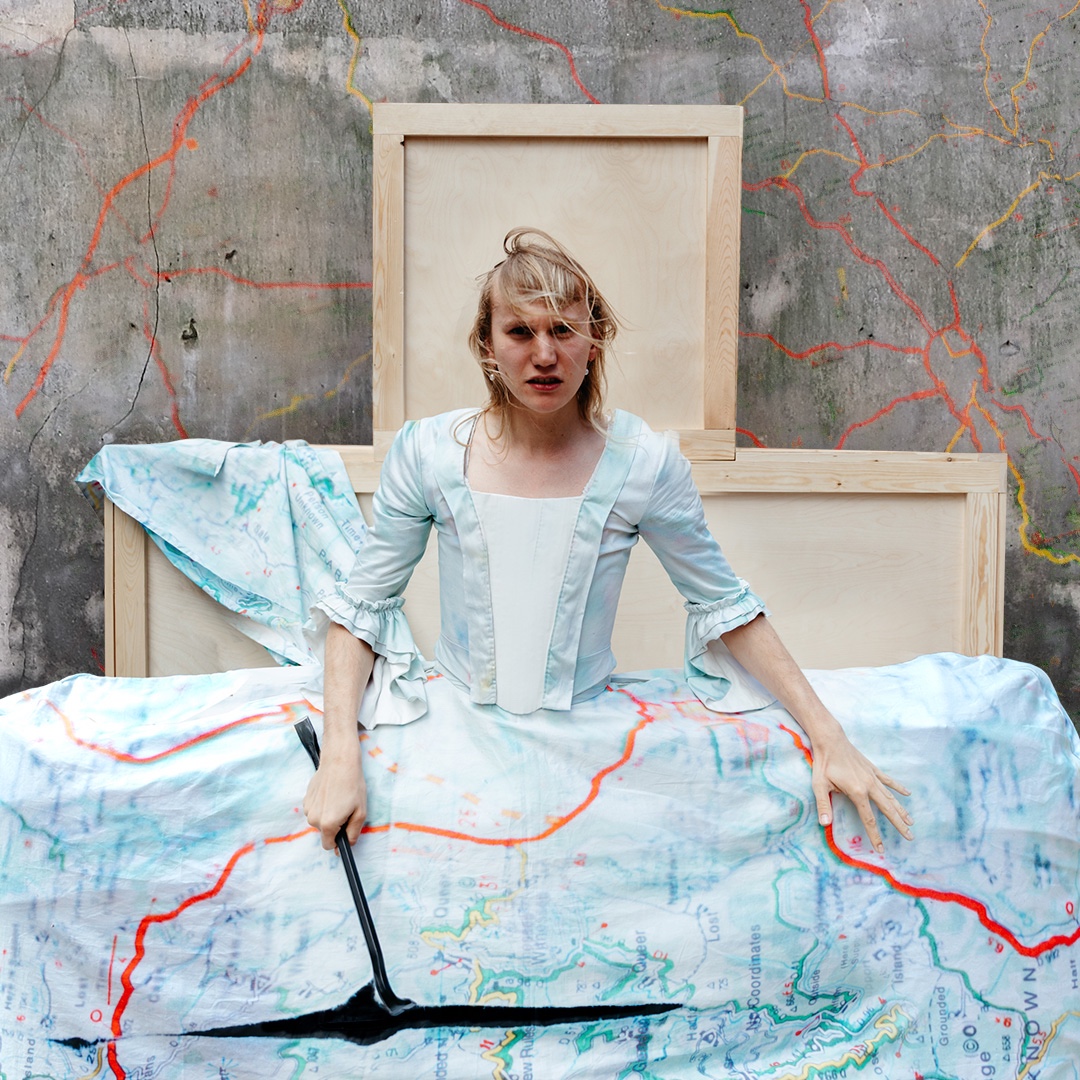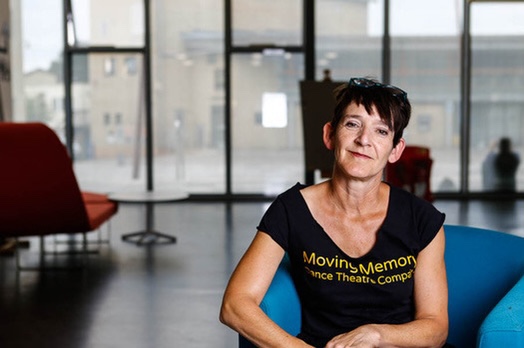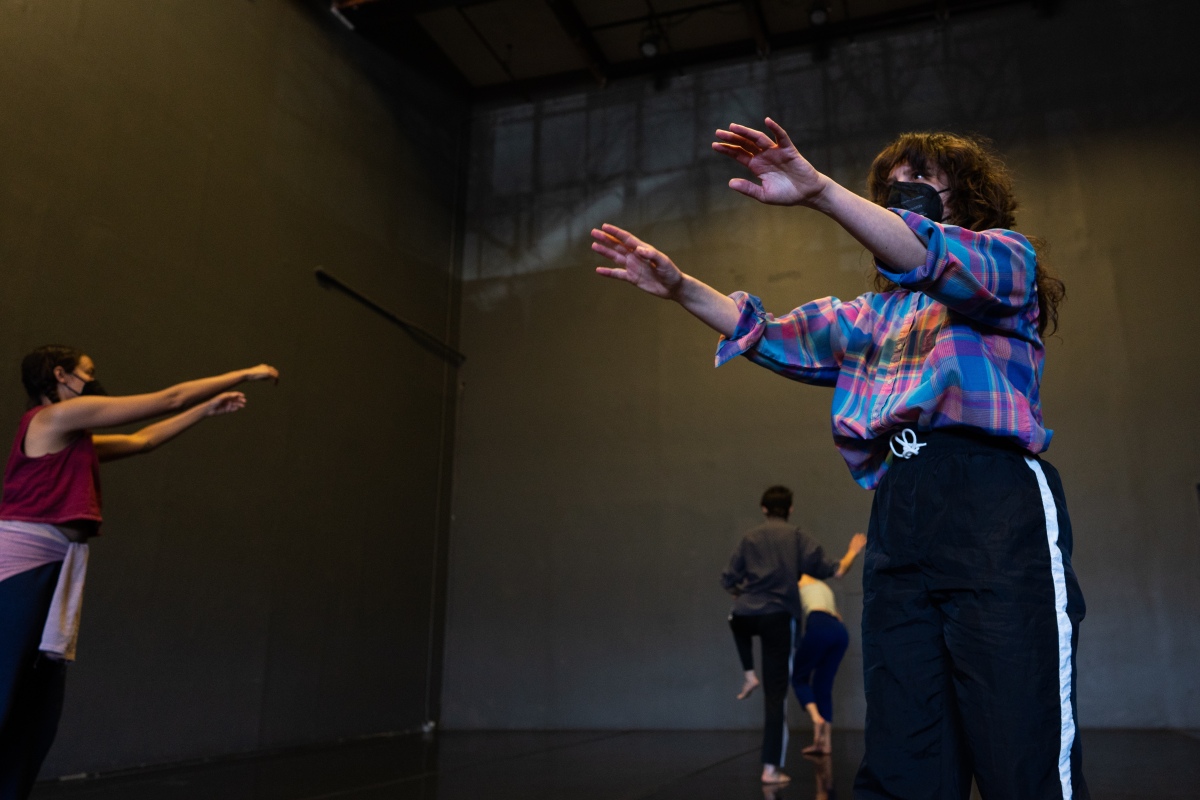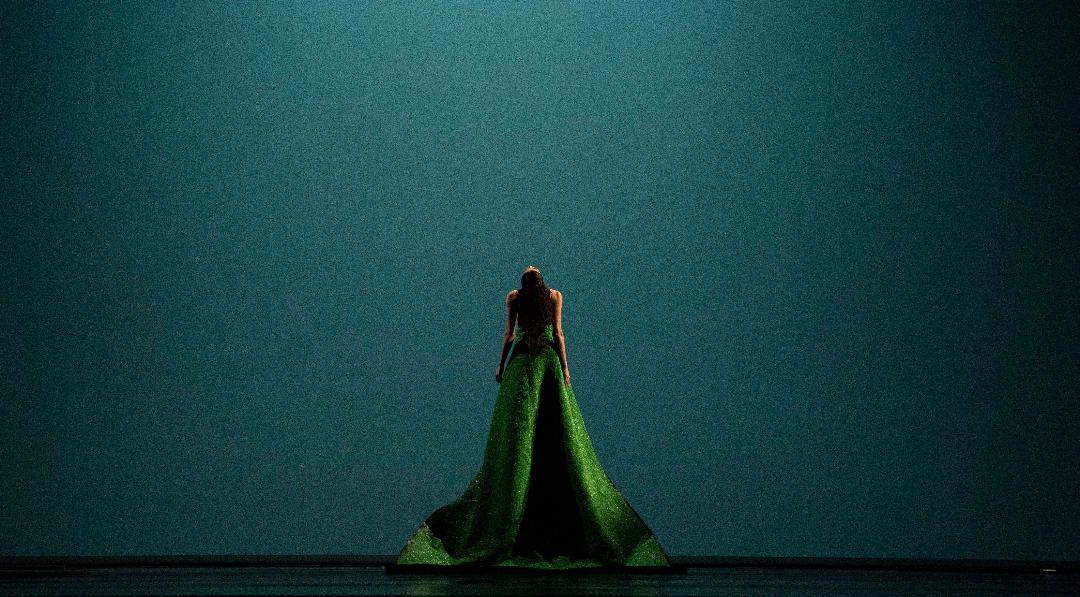Words by Jodie Nunn.
Paved with poeticism, poignancy, and playfulness, EQ DANCE CO. offers a conversant take on the quest for physical, mental, and spiritual Sanctuary, emblazoned with a profound nuance that glistens like golden flecks in a woven tapestry of everyday existence.
Having previously reviewed an excerpt of this piece as part of Resolution Festival at The Place (London) in May this year, I was delighted to receive an invitation to attend EQ DANCE CO.’s final week of rehearsals to review this performance in its entirety. EQ DANCE CO. creates dance works centred around mental health and the human experience, with Friday 30th September 2022 marking the premiere of the company’s first full-length piece, Sanctuary.
At the helm of the project, Artistic Director David West leads the cast of four in this spiritual search for security, emblazoned with a profound nuance that glistens like golden flecks in a woven tapestry of everyday existence. With a spiralling acceleration, the dancers circumvolute the physical, mental, and spiritual manifestations of sanctuary, navigating the ritual of repetitive routine, the struggle for connection and companionship, and the sabotage of self-image.
Sanctuary opens with West’s character: a statuesque representation of physical sanctuary. A whirring soundscape dissonantly lingers in the air, its cyclical, sinister strings pushed forward by a plucking undertow. The cyclical rhythms in the accompaniment are reflected in West’s movement, depicting the relentless rigmarole of routine, each time becoming more crazed, flailing, and uncontrollable, as if been manipulated by an external entity. West demonstrates a grounded lightness as he soars through the space, the accompaniment shifting to support the atmospheric luminescence of his circling. The juxtaposition of violent frustration and accepted quietude is well controlled by West, particularly prominent in moments aided by staging, draped in what appears to be a child’s blanket, or later donning a pastel pink cape, matching that of his childhood toy bunny.


Pagan Hunt and Ellie Trow are in constant communication. The vivacious warmth of the classical guitar, melodically intricate, softens the spearing projection of the piece. A platonic soulfulness is outstretched via the exchange of origami hairgrips, worn and pinched, the theme of connection and companionship clear. The playful and meandering exploration is sliced by the ruin of the home-base tent, designed by Loe D’Arcy, and crash of thunder and subsequent rainfall, the demolition of their shared sanctuary. Trow exhibits pain, struggle, and desperation, showcased in breadth and breath, her body opening and closing in vast concaving and convexing movements, initiated from torso, expanding to extremities. Hunt on the other hand sweeps with a frantic, hurried anxiety, pinpointed in a morass of dynamic intention. Hunt and Trow tentatively mirror one another in a trance-like state as they suspend in a vaporous, transcendent promenade. As the score erupts with verve, so does the pair, boasting wide smiles and vast, hovering floor sequences. The duo navigates the light and shade of searching for sanctuary in community with honesty and integrity.
Mental manifestations of sanctuary and the omnipresent shadow of self-image are expertly confronted by Alys Davies. The ominous undercurrents present in West’s opening solo rear once again, now refracted in Davies movement, entangled in a chaos of cloth and conceit. Davies masterfully shifts her weight both actively and passively across the space with unfathomable ease, liquifying durationally in the face of tension. Davies darts with an accelerating charge, ravaging up the space, blind to her surroundings, a simple pink cloth tied across her temples. Her solo is poignant, the perfect vessel for which to carry the audience through to the final quarter.
Sanctuary’s finale spirals with liquid warmth. For the first time, all four characters interact, weaving in and amongst one another, the simple sheeted set, and the central, golden strand of sanctuary. Appliquéd with a playful poeticism, the company embroider a relatable tale with nuance and poignancy.

I spoke to West after the performance, dissecting the notion of sanctuary, his approach within the studio, and his hopes for the reception of this piece.
Q: Having cultured the notion of sanctuary, initially conceived from shared experiences of the pandemic, do you think your understanding or even experience of sanctuary has changed as a result of creating this piece together?
West: “I would say it’s definitely developed from an origin point and continues to do so even now after its debut. I think our sense of sanctuary is always going to be challenged at some point of our lives, and for potentially various lengths of time, be it physically, for example your health or living situation can change overnight, or mentally, you can deal with a couple of problems, but what about when it comes in waves, then oceans, how do you stem the tides? Within this work we look particularly at self-image, crippling indecision, frozen by external pressures, and learning to look inward to find strength. Spiritually, we look to finding sanctuary in others, be it friends or family; this expands into community and what constitutes as that, understanding the individuals within it and understanding that not everyone will necessarily get along. I think we can all agree that we all want security, sanctuary. I believe that this is an important place to practice empathy. With all that said, to answer the question, the context of sanctuary is always shifting, changing in us and around us, therefore my experience of it is in constant flux.”
Q: What was the process of creating this piece, and did you understanding of sanctuary influence your approach within the studio?
West: “When we took on our cast after an online audition process last year, my collaborator Josh Baker-Mendoza (the writer for this project, helping to flesh out the narrative, storytelling element of the show) and I led with effectively interview style questions, giving our cast some artistic license, sharing their thoughts on what sanctuary meant to them. Slowly but surely, we started to see a framework appear, which led to the anthology of the individual characters and their stories, where the main pillars of sanctuary appeared, as a physical, mental, and spiritual thing. This would lead to a RnD structure, gaining understanding of each character; working with the artists, we created first drafts, and when developing the final section, we worked on how each character would co-exist in the space together, and to figure out what was their shared goal was, what was the shared form of sanctuary.
Most recently, leading up to the debut, we spent the last month reworking and redefining the individual characters. We took the time to define what really mattered to these characters, to see them as living, breathing people; what would they care about in certain moments? This was the driving force in the final stages of production. What was also the main driving force leading us to where we are now was the kids. We originally aimed at 12+ years, but we were encouraged by Creative Scotland, following our last RnD period, to aim for a younger audience. Working with schools in Camberwell, London, performing and conducting workshops, made the project so much more worth it. Even with this younger age group, kids are starting to discover what their sanctuaries are.”
Q: What do you hope audiences take away from this performance?
West: “Ultimately, we want people to be able to relate to the characters in a real way, we are a mental health dance company after all. We want to make people laugh, cry, even feel frustrated, it’s all important. The experience we want to provide is an authentic one. We aim to provide people a chance to see themselves on stage, so they can process some of their trouble from an outside perspective looking in, to see it before them, rather than existing in thoughts running around inside their heads. Dance is great way, and especially with us being a dance theatre company, to show these thoughts and manifest them physically to the highest standard, and with honesty.”
For future performances and workshop opportunities, you can find EQ DANCE CO. over on Instagram.




